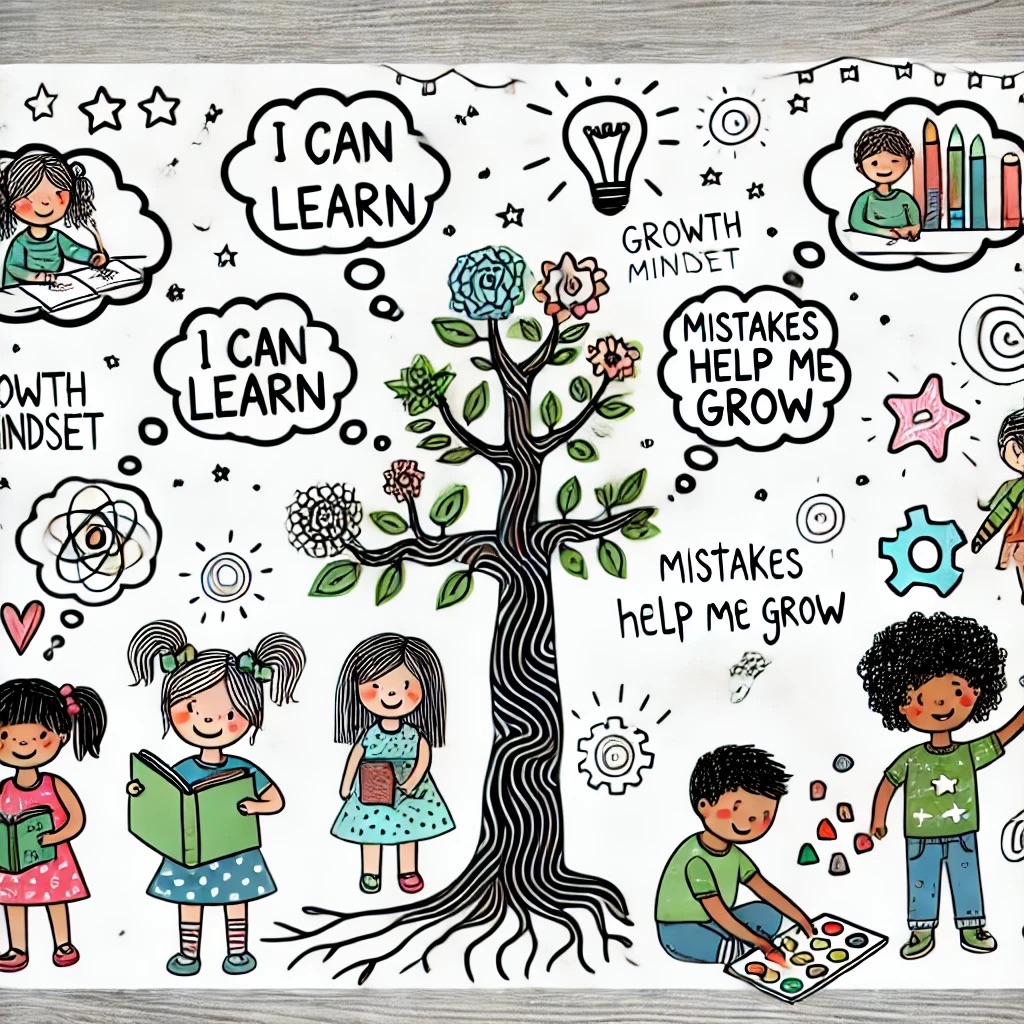
A growth mindset isn’t just some trendy buzzword. It’s a game-changer for all of us. But what exactly are we talking about here? Well, it all started with Carol Dweck, a psychologist who found that people with a growth mindset believe their abilities can be developed through dedication and hard work. This contrasts with those who have a fixed mindset and think their intelligence and talent are static traits. It’s clear that helping our kids develop a growth mindset is vital to their development and success later in life, but how can we accomplish that? How do we develop a growth mindset in kids?
Kids are like sponges, soaking up everything around them. This is why fostering a growth mindset early on is so key. When kids believe they can improve through effort, they become more resilient and are better equipped to handle challenges. Plus, they tend to enjoy learning more.
Think of a growth mindset as a toolkit for life. Kids with this mindset are not just equipped academically but are also more likely to develop emotional resilience. They learn to view setbacks as opportunities to grow, which is huge for their lifelong learning journey.
So, what’s the big difference between a fixed mindset and a growth mindset? It’s all in how you approach challenges. A kid with a fixed mindset might say, ‘I’m just not good at math,’ and give up easily. On the flip side, a growth mindset kid would think, ‘I can get better at math if I practice.’ The first approach closes doors, while the second one opens them up wide. This simple shift in thinking can have monumental impacts on their future.
Practical Strategies for Parents and Educators to Foster a Growth Mindset
Creating an environment where kids feel safe to explore and make mistakes is crucial. No one likes to mess up, especially kids. Yet, failure is one of the best teachers, if approached correctly. Encourage kids to see mistakes as learning opportunities rather than something to be feared.
Praising effort over innate talent is another major strategy. It’s tempting to say, ‘You’re so smart!’ But research shows that this kind of praise can actually backfire, making kids more risk-averse. Try acknowledging the hard work or creativity they put into a task instead. Saying something like, ‘I’m impressed with how hard you worked on this,’ can go a long way.
Constructive feedback also plays a big role. It’s not just about giving praise but also about offering guidance on how to improve. Make sure feedback is specific and actionable. Instead of saying, ‘You did this wrong,’ you could say, ‘Next time, try this approach.’
Adults need to walk the talk. Kids are incredibly observant and often mimic adult behaviors. If they see you tackling challenges with a positive attitude and a willingness to learn, they’ll likely do the same. Share your own experiences with challenges and setbacks and how you overcame them. This transparency helps kids understand that everyone faces obstacles and that perseverance pays off.
Creating small, manageable challenges for kids to overcome can also help. Set up tasks that are just a bit outside their current abilities. This way, they can experience the satisfaction of overcoming something difficult, boosting their confidence and reinforcing the growth mindset.
Tools and Activities to Reinforce a Growth Mindset in Everyday Life
Games and tools can be surprisingly effective in teaching a growth mindset. Think about puzzle games or even building blocks like LEGO. These activities naturally involve trial and error, making them perfect for showing that practice and persistence lead to success. Gadget-free activities, like drawing or even learning a musical instrument, can also be fantastic ways to nurture a growth mindset.
Storytelling is another great tool. Books like “The Little Engine That Could” or “Rosie Revere, Engineer” are packed with messages about perseverance and the power of not giving up. Reading these stories together can spark important conversations and help internalize these lessons in a fun, engaging way.
Real-life challenges offer excellent opportunities for growth. Give kids small tasks that require problem-solving, like planning a weekend outing or helping with a DIY project around the house. These experiences teach that challenges are part of life and can be overcome with enough effort and creativity.
Incorporate growth mindset lessons into daily routines. Simple phrases like, “What did you learn today?” or “How did you solve that problem?” can encourage kids to reflect on their experiences and understand the value of effort and learning. Also, creating a ‘growth mindset jar,’ where kids write down moments they pushed through a challenge, can be a visual and interactive way to reinforce this mindset.
Overcoming Common Challenges and Misconceptions
A big misconception about the growth mindset is that it means ignoring weaknesses. However, it’s not about pretending weaknesses don’t exist, but about acknowledging them and finding ways to improve. Teach kids to face their weaknesses head-on, approach them with a plan, and learn from the journey.
Setbacks are part of life. Dealing with them effectively can be tricky, but it’s crucial for developing grit and perseverance. When kids hit a bump in the road, guide them through reflecting on what happened, what they can learn from it, and what they can do differently next time. This approach helps them see setbacks as temporary and fixable.
Balancing encouragement with realistic expectations can be challenging. It’s important to support kids, but also make sure they understand that success doesn’t always come easily or quickly. Emphasize the importance of effort and time in achieving goals. Help them set short-term goals that lead to long-term achievements, so they learn to appreciate the process.
Another common challenge is reframing failures as learning opportunities. This starts with changing the language we use. Instead of saying “failure,” consider using “learning experience” or “setback.” This subtle shift can do wonders. When kids understand that getting something wrong is just a step toward getting it right, they’re more likely to keep trying.
